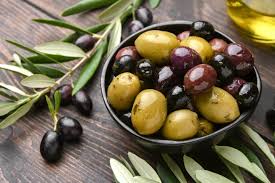
Table of Contents
In the world of culinary delights, few ingredients boast the versatility and health benefits that olives do. From Mediterranean platters to gourmet pizzas and healthy salads, they have earned a celebrated place in kitchens around the globe. Whether green or black, whole or sliced, fresh or cured, They are not only flavorful but also packed with nutrients and health-enhancing properties. Indeed, olives: nature’s versatile ingredient for every dish is not just a phrase — it’s a fact backed by centuries of culinary tradition and scientific research.

A Brief History of Olives
The story of olives dates back over 6,000 years. Originating in the Mediterranean Basin, They were among the first fruits domesticated by humans. Ancient civilizations such as the Greeks, Romans, and Egyptians revered olives, not only for their rich taste but also for their symbolic meanings of peace and prosperity. Today, It continue to be a global staple and are cultivated in countries far beyond the Mediterranean, including the United States, Chile, and Australia.
Types of Olives and Their Unique Flavors
Understanding the different types of olives is key to appreciating olives: nature’s versatile ingredient for every dish. Here are some popular varieties:
- Kalamata: Dark purple and almond-shaped, these Greek olive are known for their rich and fruity flavor.
- Manzanilla: A small green olive from Spain, perfect for stuffing with garlic, cheese, or pimentos.
- Castelvetrano: From Italy, these green olive are prized for their buttery texture and mild, sweet taste.
- Arbequina: A tiny Spanish olive often used to make premium olive oil, featuring a delicate and slightly nutty flavor.
Each variety has a unique taste, texture, and culinary use, reinforcing the idea that olive: nature’s versatile ingredient for every dish is more than just a catchy tagline.
Culinary Uses of Olives
Appetizers and Tapas
They are a popular starter and are often served with cheese, nuts, and cured meats. Whether marinated in herbs and olive oil or stuffed with exotic ingredients, They can be the highlight of any appetizer spread.
Salads and Dressings
Add a punch of flavor to your salads with a handful of sliced olives. Their briny taste pairs wonderfully with leafy greens, cherry tomatoes, feta cheese, and vinaigrettes. Homemade dressings infused with olive puree can elevate even the simplest salads.
Main Dishes
They are often used in pasta, poultry, and seafood dishes. Chicken Marbella, a famous dish from the 1980s, features olives, capers, prunes, and white wine—a testament to how olives: nature’s versatile ingredient for every dish can create unforgettable meals.
Breads and Pastries
They bring a savory touch to baked goods. Olive bread, focaccia, and even olive-stuffed puff pastries are beloved by foodies worldwide.
Pizza and Pasta Toppings
No discussion of olive is complete without mentioning their role in Italian cuisine. Black olive are a classic topping for pizza, while both green and black enhance pasta sauces and pasta salads.
Health Benefits of Olives
The phrase olive: nature’s versatile ingredient for every dish also encompasses the fruit’s impressive health profile. Here’s why you should include olive in your daily diet:
1. Rich in Antioxidants
It contain polyphenols, which act as antioxidants to reduce oxidative stress and inflammation in the body.
2. Heart Health
They are a source of monounsaturated fats, particularly oleic acid, which can help reduce LDL (bad) cholesterol while maintaining HDL (good) cholesterol levels. Harvard Health explains how these fats support cardiovascular well-being.
3. Anti-Inflammatory Properties
The antioxidants in olive have anti-inflammatory effects, which can help manage chronic conditions like arthritis.
4. Digestive Aid
Olive contain dietary fiber that supports digestion and gut health, making them a smart addition to any meal.
5. Bone Health
It may contribute to bone health due to their polyphenol content, which has been shown to help prevent bone loss in scientific studies.
Olive Oil: Liquid Gold
Derived from pressed olive oil is another reason why olive: nature’s versatile ingredient for every dish rings true. Extra virgin olive oil (EVOO) is packed with antioxidants and healthy fats, and it’s perfect for cooking, dressing, and even baking.
- Cooking: EVOO has a relatively high smoke point and can be used for sautéing vegetables or grilling meats.
- Dressings: Combine EVOO with lemon juice, vinegar, or herbs to create fresh, flavorful dressings.
- Dipping: A simple blend of olive oil and balsamic vinegar makes a perfect dip for crusty bread.
Explore more about the benefits of olive oil from Olive Oil Times.
How to Store and Use Olives Properly
Proper storage is essential to maintain the freshness of olive:
- Refrigerate opened jars and containers.
- Keep them submerged in brine to preserve texture and flavor.
- Use clean utensils to avoid cross-contamination.
When cooking, rinse excess brine or oil from olive if you want to moderate the saltiness of a dish.
Pairing Olives with Other Foods
Another reason why olive: nature’s versatile ingredient for every dish stands true is their compatibility with various ingredients:
- Cheeses: Feta, mozzarella, blue cheese
- Fruits: Oranges, figs, grapes
- Nuts: Almonds, walnuts, pistachios
- Grains: Quinoa, bulgur, couscous
- Proteins: Chicken, fish, tofu
These combinations add depth and flavor, making every bite a gourmet experience.
Cultural Significance of Olives
In many cultures, They are more than just a food item—they symbolize unity, peace, and longevity. The olive branch is a well-known emblem of peace, and olive oil has been used in religious ceremonies and medicinal practices for centuries. This cultural richness reinforces why olive: nature’s versatile ingredient for every dish deserves a place in every kitchen.

DIY Olive Recipes to Try at Home
Here are some easy and delicious recipes that highlight how olives: nature’s versatile ingredient for every dish can shine:
Marinated Olives
- Mixed olives
- Olive oil
- Garlic
- Lemon zest
- Rosemary & thyme
Marinate overnight and serve as an appetizer.
Olive Tapenade
- Black olives
- Capers
- Anchovies (optional)
- Garlic
- Olive oil
Blend to a coarse paste and use as a spread or dip.
Mediterranean Pasta
- Pasta of choice
- Cherry tomatoes
- Olives (Kalamata or Manzanilla)
- Feta cheese
- Olive oil & herbs
Toss together for a quick and hearty meal.
Olive Bread
Incorporate chopped this into bread dough for a savory twist on traditional loaves.
Find more creative olive-based recipes from EatingWell and The Mediterranean Dish.
Environmental Impact and Sustainability
Olive trees are hardy and drought-resistant, making them ideal for sustainable farming. Moreover, modern olive farming methods increasingly prioritize eco-friendly practices, including water conservation and organic growth.
Conclusion
It’s easy to see why olives: nature’s versatile ingredient for every dish is a statement that holds true across continents, cuisines, and cultures. They offer unmatched flavor, countless culinary uses, and substantial health benefits. From your morning toast to your evening entrée, there’s always a place for it on the plate.
Next time you’re planning a meal, remember: with it , you’re not just adding an ingredient—you’re embracing a legacy of flavor, nutrition, and culture. Let olives: nature’s versatile ingredient for every dish be your go-to choice in the kitchen.
Also Read :
Lotus Energy Drink:How to Boost Your Energy with Lotus Energy Drink 2025
Best Understand the myths around puffy nipples
Eye Lift Before and After: Stunning Transformations You Need to See (USA)






